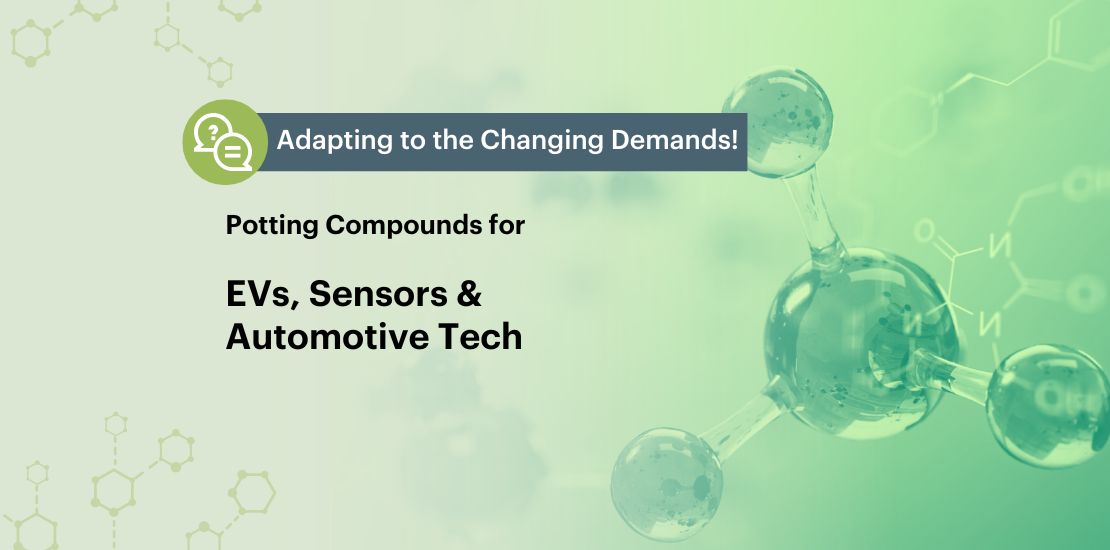- February 24, 2025
- Posted by: veeyor@dmin
- Category: Uncategorized

The demand for reliable, high-performance potting compounds is evolving rapidly, especially in industries like Electric Vehicles (EVs), sensors, and automotive electronics. With new challenges emerging every day, the right potting compound can make all the difference in ensuring durability, safety, and efficiency.
1. The Growing Demands of EVs and Automotive Electronics
Electric vehicles and modern automotive systems require potting compounds that can handle extreme conditions. Some key requirements include:
- Heat Resistance – EV batteries and power electronics generate significant heat, requiring compounds with high thermal stability.
- Vibration and Shock Protection – Automotive electronics endure constant movement, making impact-resistant compounds essential.
- Electrical Insulation – High-voltage EV components need superior electrical insulation to prevent failures.
2. The Role of Potting Compounds in Sensor Technology
As industries become more dependent on precision sensors, potting compounds play a critical role in their protection. Sensors in automotive, industrial, and consumer electronics must withstand:
- Moisture and Chemical Exposure – Protecting delicate circuits from environmental damage.
- Miniaturization Challenges – Compact sensors need low-viscosity compounds that penetrate small spaces without adding excess weight.
- Long-Term Stability – Ensuring consistent performance over years of use.
3. Emerging Trends in Potting Compound Technology
| Innovation | Benefits |
| Thermally Conductive Potting | Enhances heat dissipation, crucial for EV batteries and high-power electronics. |
| Self-Healing Compounds | Repairs minor cracks, extending component lifespan and reducing maintenance. |
| Silicone-Based Compounds | Withstands extreme temperatures while maintaining flexibility. |
| Bio-Based and Sustainable Materials | Eco-friendly alternatives that reduce carbon footprint. |
4. The Future: What’s Next?
Potting compounds will continue evolving as industries demand:
- Faster Curing Times – Speeding up production without compromising quality.
- Lightweight Formulations – Essential for EVs and aerospace applications.
- Greater Customization – Tailored properties for unique industry requirements.
As technology advances, so must the materials that protect it. Choosing the right potting compound isn’t just about durability—it’s about staying ahead in a competitive, fast-moving market. Whether it’s EVs, sensors, or automotive systems, the future of potting compounds lies in innovation, efficiency, and sustainability.
Stay informed, adapt to new trends, and invest in the right materials to future-proof your applications!
